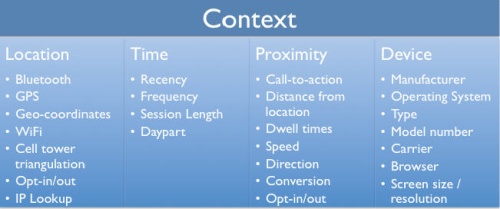Not your grandmother’s campaign analysis — Mobile’s unique attributes makes it different and more difficult to measure than Web-based marketing. Learn why and what you need to look for.

As recently reported in Smart Company, six out of every 10 people alive on Earth, including children, the elderly and people in developing countries, now have a mobile phone. This equates to approximately 6.7 billion mobile devices worldwide. With this kind of population penetration, the chance that you’ll be conducting some kind of mobile marketing or advertising campaign in the near future also increases. With the help of the Mobile Marketing Association’s MMA Primer on Mobile Analytics, let me help guide you through the process of tracking and measuring your mobile marketing and advertising efforts.
Defining Mobile Measurement
Though the measuring and analyzing of online campaigns has matured, mobile analytics is still in its infancy. Unlike online, mobile campaigns have many varying factors to take into account: “screen size and resolution across thousands of devices; numerous operating systems and browsers; unique network elements; user location.” Compound this complication by the fact that the “cookie”, one of the defacto means to track online campaigns, does not commonly work on mobile, and mobile campaign tracking gets even trickier.
For the purpose of mobile campaign measurement, the MMA only counts those generated by “a handset, tablet, or other communication device used to access the Internet wirelessly”. Traditional PCs and laptops do not count as “mobile devices”.
The primary difference between online campaign measurement and mobile campaign measurement is consumer engagement, a factor “heavily influenced by the intimacy and personal nature of mobile”. Mobile can be used any time, anywhere, and “mobile users are often very task-focused when using their devices rather than casually browsing the Internet”. These differences significantly impacts expectations for typical data points like total traffic, time spent, pages viewed.
Mobile Measurement Points
The mobile user’s experience varies on any given day. The catch-all term “mobile” includes mobile messaging (SMS, MMS, and mobile email); voice interaction (Siri, Google Voice, etc); mobile search; mobile web browsing; mobile apps; location-based services enabled through GPS, WiFi, and others; QR codes; mobile payments; augmented reality; mobile advertisements; and “other mobile media capabilities depending on unique device features.”
- Mobile Messaging. Aspects of mobile message measurement include mobile device carrier, device identifier, timestamp, response history for specific numbers, and URL link conversions.
- Mobile Apps. The MMA points out that analysis of mobile apps can pose challenges because “data on [number of] downloads, user location at download, ratings, app deletions…generally resides within the application stores,” whereas more accessible data includes that which is sent “from the application itself, like application launches, session times, utilization of native device functionality, and specific consumer actions.”
- Mobile Ads. Mobile ads range from “text, to audio, images, video and even rich media.” Due to the wide-range in mobile device capabilities, mobile ads themselves still tend to be simpler than their online cousins (the advent of tablets and larger screens will continue to evolve mobile ad content, however). Like online ads, mobile ads are also measured in terms of impressions, the “measure of the delivery of an advertisement from an ad delivery system,” but how the impression gets tracked – and therefore counted – depends upon the chosen tracking asset or tag, defined as “any piece of content associated with an ad or the page on which an ad appears that is designated to serve as the ‘trigger’ by which the ad is counted.” Common tracking assets include “a 1×1 pixel image, a 302-redirect, a Javascript code, or the ad itself.”
- Mobile Context. The context of a user’s mobile experience also reveals much to marketers. Just imagine what analyzing any of the below context points can tell you about your consumers and your campaigns.

- Cross-Media Impact. Expect to see more and more integration of mobile and traditional marketing and advertising campaigns such as the placement of QR codes on product packaging and print advertising or the mobile call-to-action on television programming or radio advertisements to drive consumer engagement. The response rate funnel of these engagements can and should be measured.
Because of the complexity of mobile analytics, right now you cannot rely on Google Analytics to provide all the analysis you’ll need. Here is a comprehensive list of mobile analytic tools and resources you might find helpful.
Now go out and get your marketing “mobile-ized!”
Comments(0)»
Leave a comment
Web Ad.vantage is a full-service online marketing company with core competencies in search engine optimization, PPC Campaign Management and online media buying. Visit our Internet Marketing Services section to learn more about our full range of services.
WebAdvantage.net encourages the reprinting of our marketing tips and articles. Before doing so, however, please contact us at for permission to do so. The company bio located above is required to accompany any reprint. Thank you in advance for your professional courtesy.
Pragmatic, professional advice with no hidden agenda.

Internet Business Forum






 back to top
back to top






